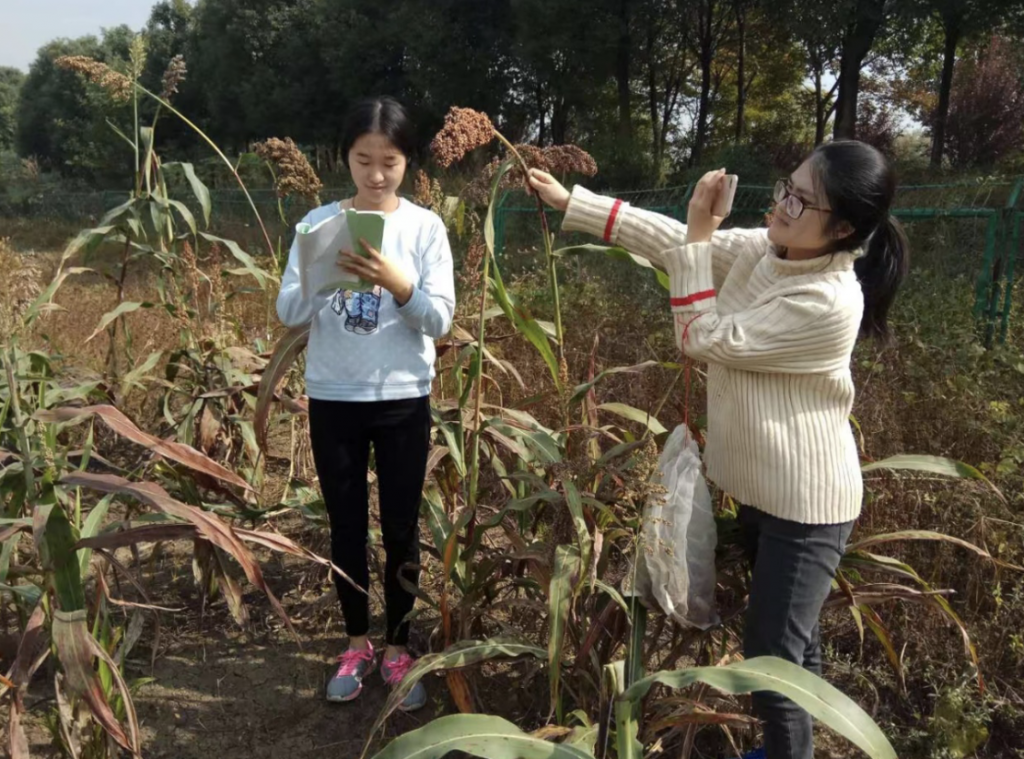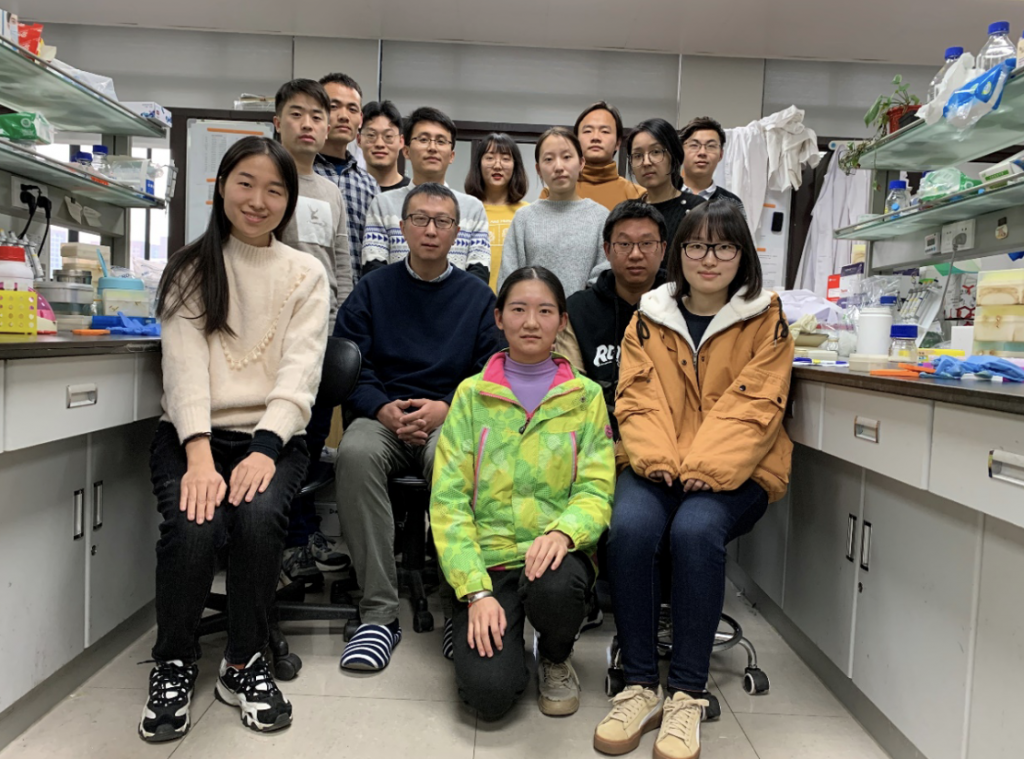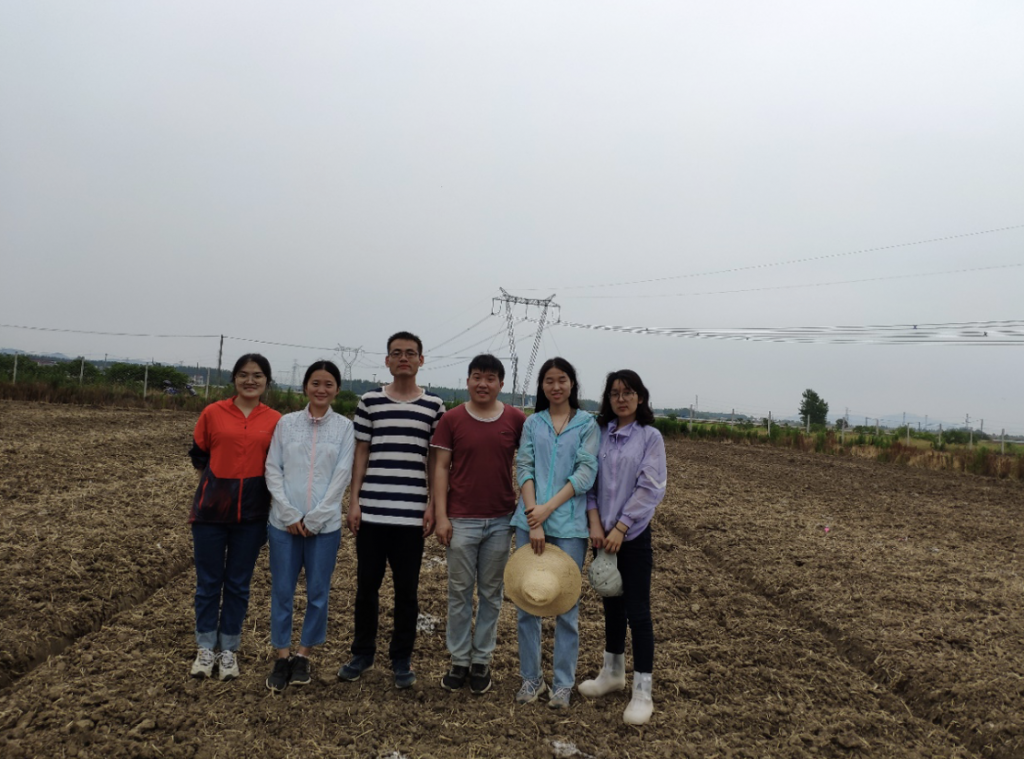Leaf senescence is the final stage of leaf development. During leaf senescence, nutrients accumulated in mature leaves are broken down and transported to reproductive organs or actively growing young tissues. This process causes reduced photosynthesis, which impacts yield to most crops and can cause economic losses to horticultural plants and fodder plants. Therefore, understanding the detailed mechanism of leaf senescence is important to sorghum cultivation. There is a complex interaction of environmental cues and biochemical mechanisms that underlies the chlorophyll degradation and senescence of leaves. In an effort to better understand the regulatory processes responsible for leaf senescence, researchers at Nanjing University, Heilongjiang Bayi Agricultural University and Huaiyin Normal University studied the WRKY TFs and signaling pathway involving the phytohormone ethylene (ET). It is known that ET accelerates leaf senescence when applied exogenously and that inhibiting its biosynthesis or perception delays leaf senescence (Wang et al., 2001; van der Graaff et al., 2006). WRKY TFs can respond to phytohormones and have been shown to be critical for leaf senescence; however, a direct link between the WRKY TFs and ET signaling for leaf senescence has not been well established. The present study found that SbWRKY50, a WRKY TF from Sorghum bicolor L, represses chlorophyll catabolic genes for epigenetic silencing through Polycomb repressive complex 1 recruitment and, consequently, delayed leaf senescence. SbWRKY50 overexpression delayed both age and dark induced senescence in sorghum, while when SbWRKY50 was knocked out (SbWRKY5O-KO) early senescence resulted, demonstrating that SbWRKY50 is a key regulator of ethylene and leaf senescence in sorghum.
Leaf senescence is closely related to plant yield. Understanding leaf senescence mechanism would help develop high yield sorghum under different environments. – Wei Chen
SorghumBase examples:

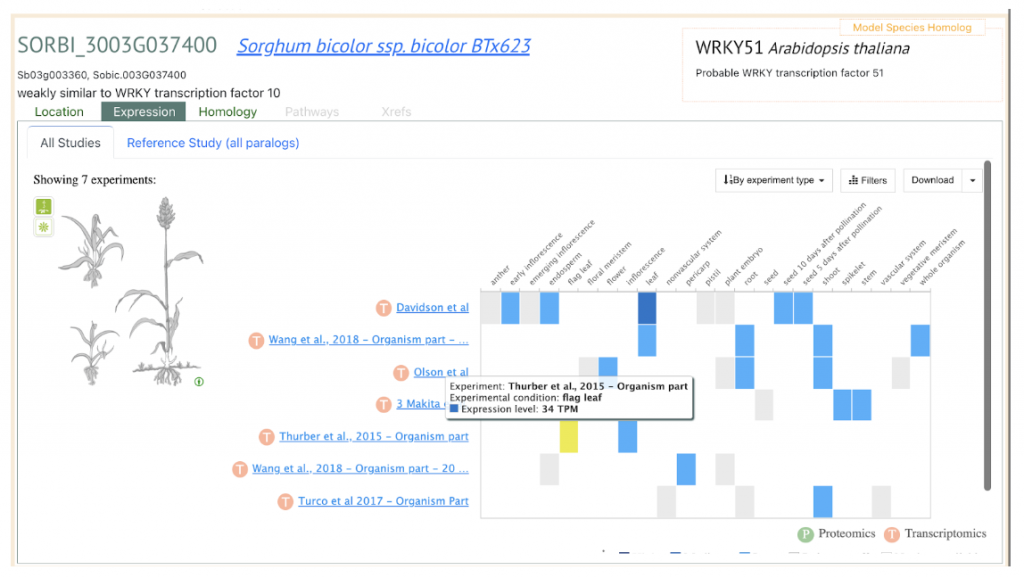
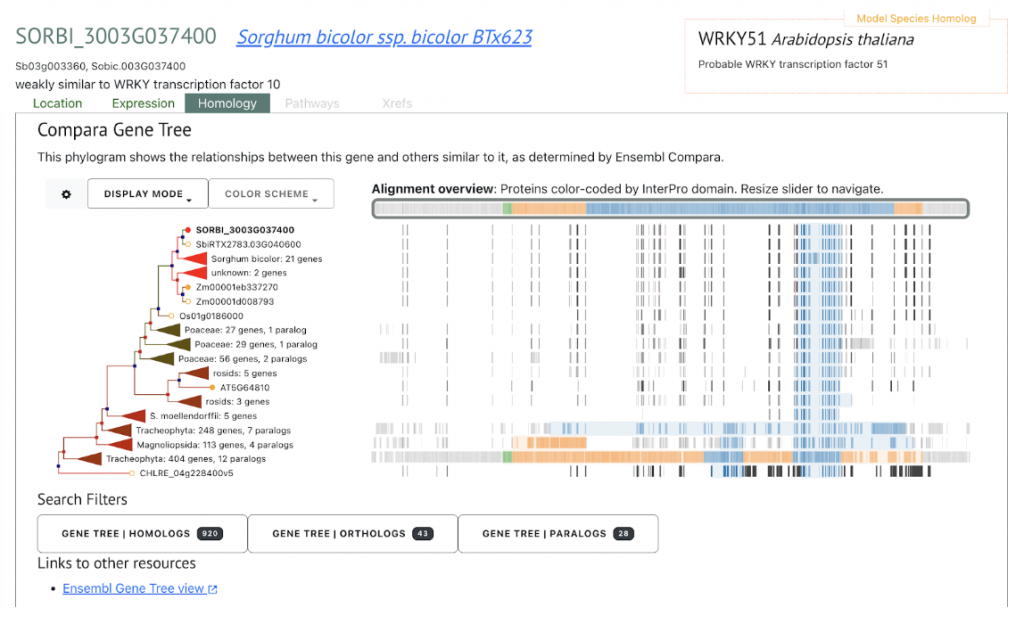
Reference
Chen W, Zheng Y, Wang J, Wang Z, Yang Z, Chi X, Dai L, Lu G, Yang Y, Sun B. Ethylene-responsive SbWRKY50 suppresses leaf senescence by inhibition of chlorophyll degradation in sorghum. New Phytol. 2023 Jan 22. PMID: 36683397. DOI: 10.1111/nph.18757. Read more
van der Graaff E, Schwacke R, Schneider A, Desimone M, Flügge UI, Kunze R. Transcription analysis of arabidopsis membrane transporters and hormone pathways during developmental and induced leaf senescence. Plant Physiol. 2006 Jun;141(2):776-92. PMID: 16603661. DOI: 10.1104/pp.106.079293.
Wang NN, Yang SF, Charng Y. Differential expression of 1-aminocyclopropane-1-carboxylate synthase genes during orchid flower senescence induced by the protein phosphatase inhibitor okadaic acid. Plant Physiol. 2001 May;126(1):253-60. PMID: 11351088. DOI: 10.1104/pp.126.1.253.
Related Project Websites:
The Sun lab: https://life.nju.edu.cn/SUN%20BO/list.psp
